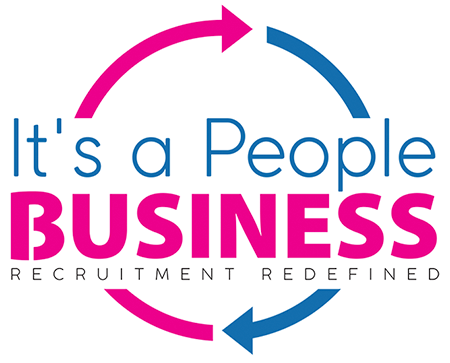
In today's competitive job market, companies are seeking ways to attract and retain top talent while also managing recruitment costs. One effective strategy that has gained traction in recent years is the implementation of internal mobility programs. Internal mobility programs enable employees to explore career opportunities within their organization, rather than seeking new roles externally. This approach not only benefits the employee by providing career growth and development opportunities, but also benefits the organization by providing a cost-effective recruitment strategy.
Internal mobility programs offer several advantages for companies, including reduced recruitment costs, increased employee engagement, and retention of highly-skilled employees. By offering career advancement opportunities, internal mobility programs can help reduce turnover rates, which can be costly for organizations. In addition, these programs can enhance employee satisfaction and motivation by demonstrating that the company values its employees and is committed to their professional growth.
Potential candidates may be more attracted to a company that offers opportunities for career growth and development.
The benefits of internal mobility programs extend beyond the cost savings and employee satisfaction. With such programs, companies can also benefit from a highly-skilled and experienced workforce. Internal mobility programs can provide employees with opportunities to develop new skills and gain experience in different roles and departments within the company, which can lead to increased productivity and innovation. Employees who are encouraged to learn and grow within the company are also more likely to feel valued and engaged, which can result in higher retention rates and a more positive company culture overall. Additionally, having a strong internal mobility program can help attract top talent to the company, as potential candidates may be more attracted to a company that offers opportunities for career growth and development. All of these factors make internal mobility programs a smart investment for companies looking to build a strong and successful workforce.
1. Boost employee engagement and retention.
1. Boost employee engagement and retention.

One of the most significant benefits of implementing internal mobility programs is the boost in employee engagement and retention. Internal mobility programs allow employees to explore new roles and opportunities within their organization, which can lead to greater job satisfaction and a sense of career progression. This, in turn, can increase employee engagement and motivation to excel in their roles.
Create a culture of loyalty and dedication that serves to benefit both the individual and the organization
Create a culture of loyalty and dedication that serves to benefit both the individual and the organization
Furthermore, internal mobility programs can help retain top talent within an organization by providing a clear path for career advancement. Research indicates that organizations that make a substantial investment in their employees' career growth and development are likely to experience a higher level of staff loyalty. When employees perceive that their employer is committed to fostering their professional development, they are more inclined to remain committed and engaged with the organization. Implementing internal mobility programs is a cost-effective recruitment strategy, as it reduces the need for external recruitment, streamlines the onboarding process, and ultimately leads to a more skilled and engaged workforce.
2. Decrease time-to-productivity for new hires.
2. Decrease time-to-productivity for new hires.
Decreasing the time-to-productivity for new hires is a crucial aspect of cost-effective recruitment strategies. Internal mobility programs can play a significant role in achieving this goal. By providing existing employees with opportunities for career advancement within the organization, companies can leverage their existing talent to fill open positions and reduce the time and resources required for external recruitment.
Read More: Mastering the Main Stages of Any Recruitment Discussion: A Practical Guide for Employers
In addition, internal hires are already familiar with the company culture and processes, which further shortens the learning curve and reduces the time required for onboarding. This can lead to increased productivity and cost savings in the long run, making internal mobility programs a valuable tool for companies looking to optimize their recruitment and talent management strategies.
3. Reduce costs of external recruitment.
3. Reduce costs of external recruitment.

One of the key benefits of internal mobility programs is the ability to reduce the costs associated with external recruitment. External recruitment can be a time-consuming and expensive process, involving advertising job openings, sifting through resumes, interviewing candidates, and conducting background checks and reference checks. In addition, external hires may require relocation expenses, sign-on bonuses, and other incentives.
Read More:How to Use Social Media to Recruit and Engage Top Talent
By promoting internal mobility and encouraging employees to apply for new positions within the company, organizations can reduce the need for external recruitment and associated costs. Moreover, internal hires are likely to require less training and orientation, as they are already familiar with the company culture and procedures. Ultimately, these cost-effective recruitment strategies can lead to significant savings for organizations while also providing opportunities for employee growth and career advancement.
4. Enhance diversity and inclusion initiatives.
4. Enhance diversity and inclusion initiatives.

A highly efficient and budget-conscious recruitment strategy involves bolstering diversity and inclusion initiatives through the implementation of internal mobility programs. The contemporary workplace thrives on diversity and inclusion, making internal mobility programs a driving force to uphold these values. Encouraging internal employee transitions fosters a workforce that embodies diversity and inclusion principles. Elevating opportunities for advancement among employees from underrepresented backgrounds paves the way for a more diverse leadership cadre. This dynamic not only broadens the talent pool but also positions the organization as a diversity and inclusion advocate, attracting a more extensive array of potential candidates for future recruitment.
Ensure your organization becomes known for its commitment to diversity and inclusion.
Moreover, internal mobility programs yield cost advantages by curbing the necessity for external recruitment efforts, simultaneously enhancing employee retention rates. The synergy of these advantages renders internal mobility a strategic asset, contributing to a progressive organizational culture while optimizing resource allocation. By embracing internal mobility programs, businesses amplify their commitment to diversity and inclusion, creating a vibrant and cohesive workforce that stands poised for sustainable growth and excellence.
5. Develop and retain top talent.
5. Develop and retain top talent.

Developing and retaining top talent is crucial for any organization seeking to maintain a competitive edge in today's fast-paced business environment. While external recruitment is often necessary to bring in fresh perspectives and skills, internal mobility programs are increasingly being recognized as a cost-effective recruitment strategy. By prioritizing the development and retention of existing employees, companies can reduce recruitment and training costs, boost employee engagement and morale, and improve overall productivity.
Internal mobility programs allow companies to tap into the potential of their existing workforce.
Employees who see opportunities for growth and advancement within their current organization are more likely to stay with the company, reducing turnover and the associated costs of replacing skilled workers. Furthermore, internal mobility programs allow companies to tap into the potential of their existing workforce, identifying and nurturing high-potential employees who may not have been identified in the hiring process. Overall, investing in internal mobility programs is a wise cost-effective recruitment strategy that can help organizations build a strong, loyal and talented workforce.
Conclusion
Conclusion
To conclude, internal mobility programs can serve as a valuable tool for companies to retain their top talent, while also reducing the costs associated with external recruitment. By investing in the development and advancement of current employees, organizations are able to foster a culture of growth and career development, which in turn leads to increased job satisfaction and employee engagement. Moreover, internal mobility programs can also help to reduce recruitment costs by minimizing the need for costly external searches and onboarding processes. Overall, implementing an effective internal mobility program can be a cost-effective way to improve employee retention, foster a culture of growth, and ultimately drive organizational success.
Read More: The Benefits of Working with a Flat Fee Recruiter
For adept advice and assistance on integrating these top-level tactics, get in touch with It's a People.Business. Our proficient recruitment experts are equipped to aid you in crafting an economical and streamlined recruitment approach that falls in-line with your organizational objectives. Take the initiative and reach out to us today to uncover more about how we can help you establish a capable and cohesive team for your burgeoning enterprise.
